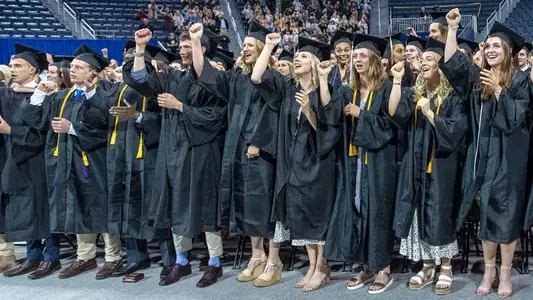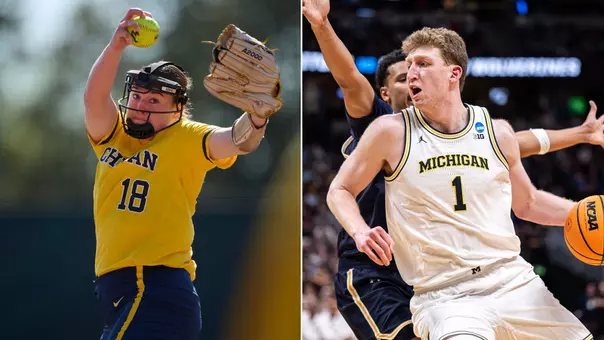
Michigan Matches School-Record Graduation Success Rate in NCAA Report
10/16/2019 1:00:00 PM | General, Academic Success Program
ANN ARBOR, Mich. -- The University of Michigan matched a school record for its Graduation Success Rate (GSR) as the NCAA released Wednesday (Oct. 16) the 2019 annual GSR and Federal Graduation Rate (FGR) reports for all NCAA Division I institutions.
Michigan matched last year's all-time record report of a four-year average GSR of 93 percent, which is 12 percentage points higher than it was in 2010. U-M's four-year rolling average FGR of 79 also stayed close to its all-time high of 81 percent from the 2017 and 2018 reports.
In addition, 11 of Michigan's 24 varsity athletic programs included in the report earned perfect GSR scores. (Note: U-M women's lacrosse is not included because it has fewer than four years of graduation data.)
The NCAA also released its overall Division I national averages: the four-year GSR for all member schools is 88 percent, and the 2012-13 incoming class FGR is 68 percent.
Among the Big Ten Conference institutions, Michigan had the third-highest GSR at 93 and the third-best FGR score of 79. Northwestern led the conference with scores of 98 and 91, respectively, while Minnesota was second at 94 and 81.
Michigan's 11 varsity athletic programs with a 100 percent four-year Graduation Success Rate in the 2019 report are:
- Men's basketball
- Women's basketball
- Men's golf
- Women's golf
- Men's gymnastics
- Women's gymnastics
- Rowing
- Softball
- Men's tennis
- Volleyball
- Wrestling
Women's golf and wrestling also recorded perfect Federal Graduation Rate scores.
Michigan is the only Big Ten school with perfect GSR marks in both men's and women's basketball. Michigan football's GSR score of 91 ranks second to Northwestern among league schools.
Since the NCAA began collecting GSR data with the entering freshman class of 1995, the U-M softball team has posted perfect 100 percent scores in each of the 15 annual reports. Women's golf has had perfect GSR scores the last 12 years, men's tennis for the last 10 years, and men's golf for the last nine years.
Both the GSR and FGR are based on the number of student-athletes on athletics aid enrolling in school each year. A number of variables may impact these figures, such as student-athletes who opt for professional or educational opportunities outside of their original institution, and student-athletes in good academic standing who choose to leave school early.
The FGR is mandated by the U.S. Government and reflects the number of scholarship student-athletes who enter an institution in a specific academic year and graduate from that same institution within six academic years. It does not factor in transfer students leaving or entering an institution; the FGR counts transfers as non-graduates and therefore is typically lower than the GSR.
The GSR accounts for students who transfer into an institution and does not penalize institutions that have student-athletes who choose to transfer out while still in good academic standing.










